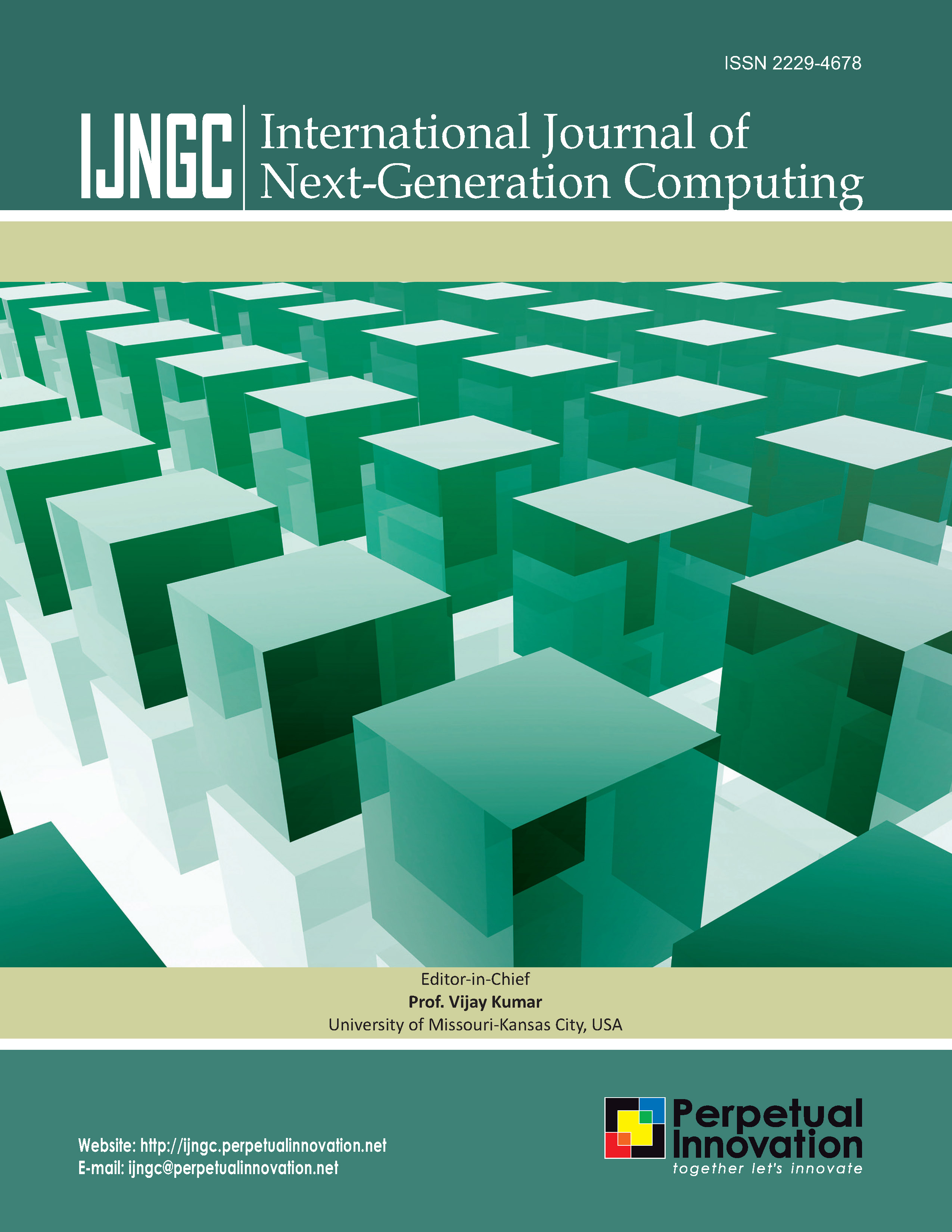A Novel Deep Convolutional Neural Network based Classification of Arrhythmia
##plugins.themes.academic_pro.article.main##
Abstract
Holter monitors are used to record Electrocardiogram (ECG) data which is extremely hard to analyze manually. Convolutional Neural Network (CNN) are known to be efficient for classification of image data. Hence, in this study, we are using Deep Convolutional Neural Network to classify the ECG data into various types of Arrhythmias. Denoising, segmentation and data augmentation techniques are used for pre-processing of the data. The proposed model uses the MIT-BIH Arrhythmia Dataset for training and evaluation purpose this dataset has much imbalance which has been removed using data augmentation techniques. The proposed approach shows an overall accuracy 99.67% along with 99.68% precision and 99.66% recall. Further, we have also compared the state-of-the-art models like 2D CNN, genetic ensemble of classifiers, Long Short-Term Memory (LSTM) Networks, etc results with proposed model. And the introduced approach is outperforming when compared to these models.
##plugins.themes.academic_pro.article.details##

This work is licensed under a Creative Commons Attribution 4.0 International License.
References
- Osowski S, Hoai LT, Markiewicz T (2004). “Support vector machine-based expert system for reliable heartbeat recognition.” IEEE transactions on biomedical engineering 51(4):582-589 DOI: https://doi.org/10.1109/TBME.2004.824138
- Song MH, Lee J, Cho SP et al (2005). “Support vector machine-based arrhythmia classification using reduced features.” International Journal of Control Automation and Systems 3(4):571
- Melgani F, Bazi Y (2008). “Classification of electrocardiogram signals with support vector machines and particle swarm optimization.” IEEE transactions on information technology in biomedicine 12(5):667-677 DOI: https://doi.org/10.1109/TITB.2008.923147
- V. J. Kadam, S. M. Jadhav, A. A. Kurdukar and M. R. Shirsath, “Arrhythmia Classification using Feature Ensemble Learning based on Stacked Sparse Autoencoders with GA-SVM Guided Features," 2020 International Conference on Industry 4.0 Technology (I4Tech), 2020, pp. 94-99, doi: 10.1109/I4Tech48345.2020.9102675. DOI: https://doi.org/10.1109/I4Tech48345.2020.9102675
- Desai U, Martis RJ, Nayak CG (2015). “Machine intelligent diagnosis of ECG for arrhythmia classification using DWT, ICA and SVM techniques.” Annual IEEE India Conference pp 1-4 DOI: https://doi.org/10.1109/INDICON.2015.7443220
- Elif Derya Übeyli. 2009. “Combining recurrent neural networks with eigenvector methods for classification of ECG beats.” 19, 320–329. DOI: https://doi.org/10.1016/j.dsp.2008.09.002 DOI: https://doi.org/10.1016/j.dsp.2008.09.002
- Kiranyaz S, Ince T, Gabbouj M (2016). “Real-time patient-specific ECG classification by 1-D convolutional neural networks.” IEEE Transactions on Biomedical Engineering 63(3):664-675 DOI: https://doi.org/10.1109/TBME.2015.2468589
- Rajpurkar P, Hannun AY, Haghpanahi M et al (2017). “Cardiologist-level arrhythmia detection with convolutional neural networks.” arXiv preprint arXiv:1707.01836
- X. Xu and H. Liu, “ECG Heartbeat Classification Using Convolutional Neural Networks," in IEEE Access, vol. 8, pp. 8614-8619, 2020, doi: 10.1109/ACCESS.2020.2964749. DOI: https://doi.org/10.1109/ACCESS.2020.2964749
- Y. LeCun, Y. Bengio, and G. Hinton, ‘‘Deep learning’’ Nature, vol. 521, no. 7553, pp. 436–444, 2015. DOI: https://doi.org/10.1038/nature14539
- S. Albawi, T. A. Mohammed and S. Al-Zawi, "Understanding of a convolutional neural network," 2017 International Conference on Engineering and Technology (ICET), 2017, pp. 1-6, DOI: 10.1109/ICEngTechnol.2017.8308186. DOI: https://doi.org/10.1109/ICEngTechnol.2017.8308186
- Chatterjee, Shubhojeet & Thakur, Rini & Yadav, R.N. & Gupta, Lalita & Kumar, Deepak. (2020). “Review of noise removal techniques in ECG signals.” IET Signal Processing. 14. 10.1049/iet-spr.2020.0104. DOI: https://doi.org/10.1049/iet-spr.2020.0104
- M.Sabarimalai Manikandan, K.P. Soman, “A novel method for detecting R-peaks in electrocardiogram (ECG) signal", Biomedical Signal Processing and Control, Volume 7, Issue 2, 2012, Pages 118-128, ISSN 1746-8094, https://doi.org/10.1016/j.bspc.2011.03.004. DOI: https://doi.org/10.1016/j.bspc.2011.03.004
- K. Hara, D. Saito and H. Shouno, “Analysis of function of rectified linear unit used in deep learning," 2015 International Joint Conference on Neural Networks (IJCNN), 2015, pp. 1-8, DOI: 10.1109/IJCNN.2015.7280578. DOI: https://doi.org/10.1109/IJCNN.2015.7280578
- Feng Bao, Thomas Maier. “Stochastic gradient descent algorithm for stochastic optimization in solving analytic continuation problems.” Foundations of Data Science, 2020,page: 1-17.doi: 10.3934/fods.2020001 DOI: https://doi.org/10.3934/fods.2020001
- R. Mark and G. Moody. “MIT-BIH Arrhythmia Database Directory.” Cambridge, MA, USA: Massachusetts Institute of Technology, 1988.
- C. Ye, B. V. K. V. Kumar, and M. T. Coimbra, “Combining general multi-class and specific two-class classifiers for improved customized ECG heartbeat classification,” in Proceedings of the 21st International Conference on Pattern Recognition (ICPR2012), 2012, pp. 2428–2431.
- Sharma A, Garg N, Patidar S, San Tan R, Acharya UR. “Automated pre-screening of arrhythmia using hybrid combination of Fourier-Bessel expansion and LSTM.” Comput Biol Med. 2020 May;120:103753. DOI: 10.1016/j.compbiomed.2020.103753. Epub 2020 Apr 10. PMID: 32421653. DOI: https://doi.org/10.1016/j.compbiomed.2020.103753
- U. Rajendra Acharya, Shu Lih Oh, Yuki Hagiwara, Jen Hong Tan, Muhammad Adam, Arkadiusz Gertych, Ru San Tan, “A deep convolutional neural network model to classify heartbeats, Computers in Biology and Medicine.” Volume 89, 2017, Pages 389-396, ISSN 0010-4825. DOI: https://doi.org/10.1016/j.compbiomed.2017.08.022
- M. M. Rahman Khan, M. A. Bakr Siddique, S. Sakib, A. Aziz, A. K. Tanzeem and Z. Hossain, "Electrocardiogram Heartbeat Classification Using Convolutional Neural Networks for the Detection of Cardiac Arrhythmia," 2020 Fourth International Conference on I-SMAC (IoT in Social, Mobile, Analytics and Cloud) (I-SMAC), 2020, pp. 915-920, DOI: 10.1109/I-SMAC49090.2020.9243474. DOI: https://doi.org/10.1109/I-SMAC49090.2020.9243474
- Chen Chen, Zhengchun Hua, Ruiqi Zhang, Guangyuan Liu, Wanhui Wen, “Automated arrhythmia classification based on a combination network of CNN and LSTM, Biomedical Signal Processing and Control.” Volume 57, 2020, 101819, ISSN 1746-8094, https://doi.org/10.1016/j.bspc.2019.101819. DOI: https://doi.org/10.1016/j.bspc.2019.101819
- Sheikh, Danish, et al. "An ECG Heartbeat Classification Strategy using Deep Learning for Automated Cardiocare Application." 2021 3rd International Conference on Advances in Computing, Communication Control and Networking (ICAC3N). IEEE, 2021. DOI: https://doi.org/10.1109/ICAC3N53548.2021.9725503





